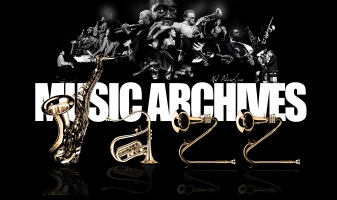
 |
Kenny Barron’s “Beyond This Place” |
Post Reply 
|
| Author | |
snobb 
Forum Admin Group 

Site Admin Joined: 22 Dec 2010 Location: Vilnius Status: Offline Points: 28831 |
 Post Options Post Options
 Thanks(0) Thanks(0)
 Quote Quote  Reply Reply
 Topic: Kenny Barron’s “Beyond This Place” Topic: Kenny Barron’s “Beyond This Place”Posted: 15 May 2024 at 6:20am |
Jazz Album Review: Kenny Barron’s “Beyond This Place” – As Enthralling as EverThe spirited restraint of the pianist’s playing — its omnipresent precision and clarity — sounds contemporary and fresh. Kenny Barron, Beyond This Place (Artwork Records)
Saxophonists love him: besides Lateef, he’s on key recordings by Joe Henderson, Sonny Fortune, Marion Brown (Why Not) He was also the pianist for the group Sphere, which was dedicated to the compositions of Thelonious Monk, whose pieces appear everywhere in Barron’s discography: one of his albums is named Green Chimneys. The title cut is by Monk, and the trio with Buster Williams and Ben Riley also performs Monk’s “Straight, No Chaser” Kenny Barron had one hit, at least in terms of jazz radio: his tune “Sunshower,” which was the opening number on his album Innocence. He plays electric piano on that record, which was on the Wolf label — electric was the thing in 1978. He made an acoustic version on last year’s album, The Source (Arts Fuse review). What remains consistent throughout Barron’s career is the clarity of his ideas, the beauty of his sound, and his marvelous way of building tension and then letting it go. He effortlessly carries us along: his left hand skips or plays darting chords, or adds its own lines. Sometimes Barron infuses thumping Monk-like passages. On Ellington/Strayhorn’s “Daydreams,” he muses gracefully, his performance of the melody enriched — but not obscured — by his busy accompaniment. Barron is celebrating his eightieth birthday with a new album, Beyond This Place The band pays more direct homage to Monk on “We See,” in which Barron scurrys downhill on the first bridge. “Innocence” was the title cut of Barron’s 1978 album. Here he handles the composition as sweetly as its title would imply. Still, note Blake’s deft, multifarious drumming. Wilkins’s solo is relaxed and lyrical. At first, he holds notes as if he wants to figure out how they taste, then he pushes the plate away to take up more energetic lines. Nelson’s vibes solo deepens the track’s texture. Barron takes care of his sidemen. Nelson is handed the first solo on the ballad “Sunset.” “Tragic Magic” is a tribute to another one of Barron’s piano heroes, Tommy Flanagan. Here the familiar “Softly as in a Morning Sunrise” zips along with cheerful vim: the pianist demonstrates his chops via long lines and some outré harmonic ventures. The album’s title track opens as a duet between Barron and Wilkins. It sounds like an excursion into gospel to me. The spirited restraint of the pianist’s playing — its omnipresent precision and clarity — sounds contemporary and fresh. I get the feeling that Barron is what you would call a chameleonic pianist: he can sound anyway he wants. Barron’s had a career of over sixty years, and he continues to enthrall. from https://artsfuse.org Edited by snobb - 15 May 2024 at 6:20am |
|
 |
|
Post Reply 
|
|
|
Tweet
|
| Forum Jump | Forum Permissions  You cannot post new topics in this forum You cannot reply to topics in this forum You cannot delete your posts in this forum You cannot edit your posts in this forum You cannot create polls in this forum You cannot vote in polls in this forum |